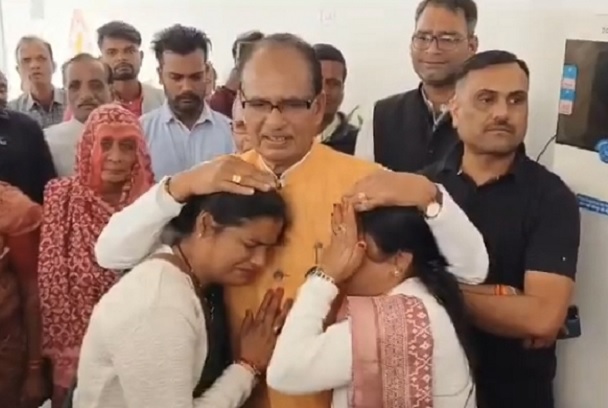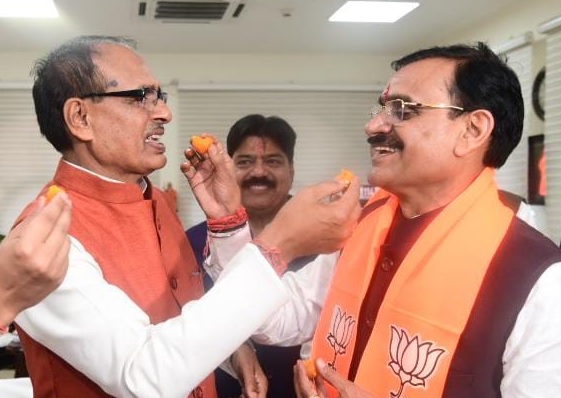Lessons to Learn: Nagpur violence sends a message to society and administration

By Muhammad Nomaan Khan
NewsBits.in
One of the major cities in Maharashtra, Nagpur, witnessed communal unrest on March 17.
The violence erupted following a protest by right-wing organizations, Vishwa Hindu Parishad (VHP) and Bajrang Dal, who were demanding the demolition of the Mughal emperor Aurangzeb's tomb located in Chhatrapati Sambhaji Nagar (formerly Aurangabad).
The protest escalated when demonstrators allegedly burnt a 'chadar' (sacred cloth) inscribed with Quranic verses, leading to heightened tensions with the Muslim community.
Sequence of Events
The VHP and Bajrang Dal organized a demonstration in Nagpur, during which they reportedly set ablaze a 'chadar' bearing inscriptions from the Quran. This act was perceived as a direct affront to Muslims' sentiments, provoking anger among local Muslims.
In response, members of the Muslim community gathered in protest, leading to clashes between the two groups.
The ensuing violence resulted in injuries to several people including policemen and citizens, with several vehicles getting damaged.
Official Responses
After the incident, authorities imposed curfew in specific areas of Nagpur to prevent further escalation. Maharashtra's Chief Minister, Devendra Fadnavis, condemned the violence and emphasized the importance of maintaining peace and order.
He criticized any glorification of Aurangzeb, aligning with the sentiments of the protesting groups.
Controversies and Clarifications
Conflicting reports emerged regarding the burning of the 'chadar.' While initial accounts from the Muslim community alleged that a cloth with Quranic inscriptions was desecrated, police investigations later refuted these claims.
A top police official of the city, stated that no such cloth was burned during the agitation and identified over 140 objectionable online posts that may have incited communal unrest.
But, later the muslim community held a press conference and showed the proof that Bajrang Dal burned the cloth with Quranic inscriptions.
Arrests and Legal Actions
In the aftermath, law enforcement agencies arrested over 50 individuals linked to the violence . Among those detained were key figures from both communities but focused on muslim community.
Notably, Fahim Shamim Khan, associated with the Minorities Democratic Party (MDP), was arrested and charged under sedition and for spreading misinformation on social media, which authorities believe contributed to the unrest.
Additionally, eight members of the VHP and Bajrang Dal surrendered to the police and were subsequently granted bail. Locals also alleged that many innocents were detained.
Broader Implications
This incident underscores the fragile nature of communal relations in India.
The controversy surrounding Aurangzeb's legacy has been a point of contention, with Hindu nationalist groups accusing him of persecuting Hindus during his reign. The recent release of the Bollywood film "Chhaava," depicting a Hindu warrior's resistance against Aurangzeb, has further inflamed these sentiments.
The recent Nagpur violence again shows that historical grievances can manifest as contemporary conflicts, and there is need for nature and measured responses from both community leaders and authorities.
Analysis
The city is generally known for peace and the incident came as a shock. A lesson is that rather than getting complacent, aim must be to have a proper communication between citizens, communities and societies with administration, throughout the year.
The recent Nagpur violence serves as a stark reminder to all. It brings to fore the importance of interfaith dialogue and the need for responsible and prompt action to prevent communal discord and control ruckus or clash.
As investigations continue, it is imperative for all stakeholders to promote peace and uphold the rule of law to ensure such incidents do not recur. Action must be fair and balanced, no side may feel that it has been treated with any bias. The administration and citizens must be in contact, always.
It's indeed a wakeup call and in each city, there is need for peace committees to be made functional from city level to the ward level and mohalla level. The police, politicians, administration and society must focus on interfaith harmony, complaint redressal, clear dialogue, hold events for promoting unity & conduct meets to promote harmony.









